I have some wonderful pictures to share with you today thanks to collector Rex Barber from Perth, Western Australia, who owns several hundred 18th – 20th century proprietary remedy lids. Rex has exhibited his collection as far afield as the Federation of Historical Bottle Collectors’ 2012 show in Reno, NV.
Many lid designs not only detail the remedies’ names and vendors, but also the claims made for the contents. Some of the products, Rex says, were manufactured by proven charlatans, while others were more homespun – perhaps sold to a local clientele by a blacksmith possessing a family recipe.
Most of the designs are examples of underglaze transfer, a printing process pioneered by Staffordshire manufacturers – including Josiah Spode – in the second half of the 18th century. By the beginning of the Victorian era this process, which involves printing an engraved image onto thin paper and then transferring it to the ceramic surface, had become extremely popular. Polychrome printing by this method was associated with the Pratt factory in Fenton from the 1840s onwards, but some of the colour pieces in Rex’s collection possibly pre-date the advent of transfer-printed Prattware.
In the mid-1990s, I lived for a while near Stoke-on-Trent, where the names of Spode and Wedgwood were almost as familiar to me as KwikSave No Frills Instant Mash and the bloke on the corner proclaiming ‘Five for a pound lighters!’ I never studied the ceramics industry in any depth, however, so it’s exciting to be discovering more about it from someone on the other side of the world!
Below is a selection of the pictures that Rex kindly gave me permission to reproduce, and I have some more to share with you in another post. The lids range in diameter from 20mm to 105mm, with the occasional square or oblong one, although these are rare.
The one for Hancock’s Bath Curative shows a typical base that would contain the remedy. Some products claimed to treat wide-ranging lists of conditions – Measam’s Medicated Cream, for example, not only promises to deal with ringworm and corns, but is also suitable for cleaning the teeth. You’d probably want to check exactly how the rest of the family were using it before you applied it to your toothbrush.
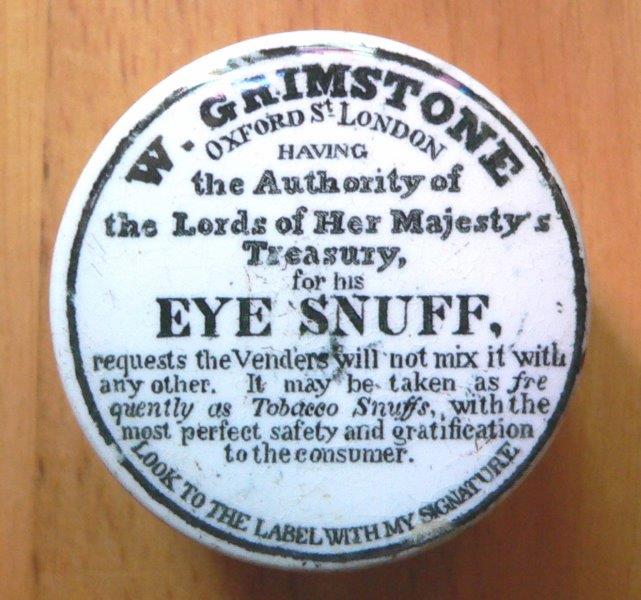
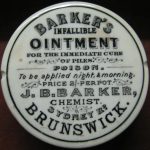
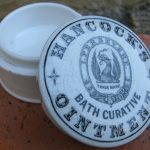
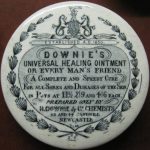
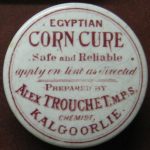

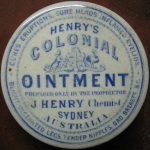
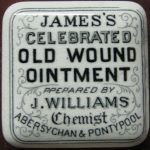
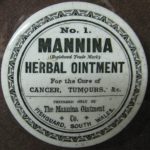
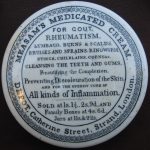
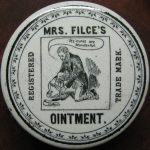


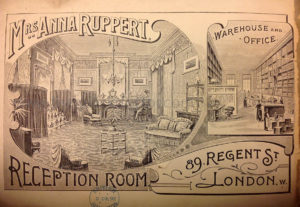
Some most doubtful cures and apparatii can be found in this book about 19th century ads:
http://www.amazon.de/Kuckucksuhr-mit-Wachtel-Reklame-Jahrhundertwende/dp/3423004487
“Zello” is already worth a translation, Doctor’s order! And Steampunk causes a quack revival: http://fav.me/d64erge